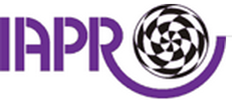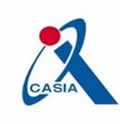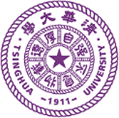| Keynote Speakers |
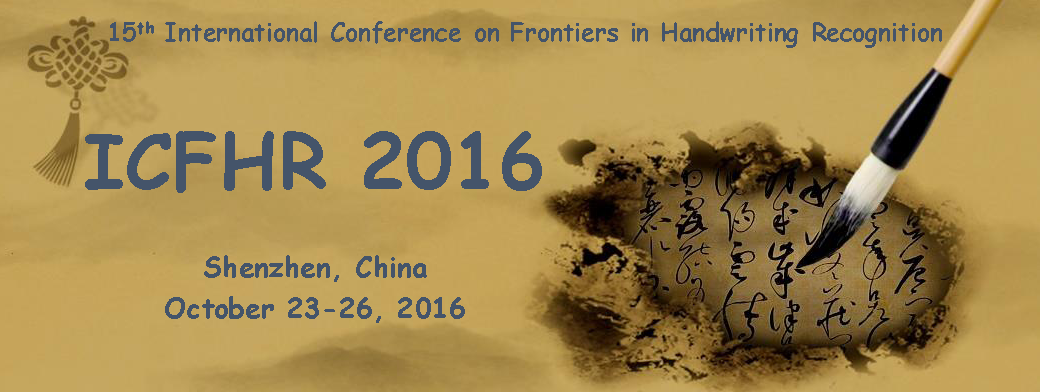
Keynote 1: How deep is deep and what's next in computational intelligence? (download slides)
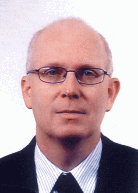
[Speaker]: Prof. Lambert Schomaker (University of Groningen, Netherlands)
[Homepage]: http://www.ai.rug.nl/~lambert/
[Abstract]: We are currently experiencing the third wave of neural-network research. For a researcher who joined in on the second wave, i.e., post Rosenblatt, about 1987, one would expect happiness with the current successes in deep learning ('See? We told you so!'). Indeed, the presence of big data and sufficient computing resources have resulted in exciting progress. However, it is also time for a critical evaluation. Rather than constituting the long-heralded computational intelligence, deep learning is unfortunately again and still mainly concerned with intelligent humans spending expensive labor hours on training, retraining and tinkering network architectures. Experiments are concerned with closed data sets, such that even the results of a thorough k-fold evaluation are not a good predictor for performance in the real world. At the same time, human cognition can handle many problems that represent 'one-shot learning', solving new puzzles without any training sample. Also, with proper feature schemes and distance functions, even nearest-neighbor and nearest-mean classifiers have an attractive performance level in big data, with the additional advantage that training is trivial. I will illustrate these insights on the basis of our experience with a 24/7 learning system for retrieval of words in massive historical manuscript collections: Monk.
[Biography]: Lambert Schomaker (1957) is a full professor in Artificial Intelligence at the University of Groningen since 2001. His main interest is in pattern recognition and machine learning problems. He has contributed to over 150 peer-reviewed publications in journals and books (h=39/Google Citations). His work is cited in 23 patents. In recent years his focus is on continuous learning systems and bootstrapping problems, where learning starts with very few examples. Professor Schomaker is a senior member of IEEE, member of the IAPR and is a member of a number of Dutch research programme commitees in e-Science (NWO), Computational Humanities (KNAW), Computational science and energy (Shell/NWO/FOM). He is the chairman of the international Unipen foundation for benchmarking of pattern-recognition systems and director of DeepLearn24 BV, a company that has as its ambition to translate current insights from computational intelligence to real-world applications.
Keynote 2: Handwriting and Speech Recognition: From Bayes Decision Rule to Deep Neural Networks (download slides)

[Speaker]: Prof. Hermann Ney (RWTH Aachen University, Aachen, Germany)
[Homepage]: http://www-i6.informatik.rwth-aachen.de/web/Staff/ney/
[Abstract]: The last 40 years have seen a dramatic progress in machine learning and in statistical methods for handwriting and speech recognition (and for other tasks in human language technology like machine translation). Most of the key statistical concepts for human language technology had originally been developed for handwriting and speech recognition. Examples of such key concepts are the Bayes decision rule for minimum error rate and probabilistic approaches to acoustic modelling (e.g. hidden Markov models) and language modelling. Recently the accuracy of handwriting and speech recognition could be improved significantly by the use of artificial neural networks (ANN), such as deep feedforward multi-layer perceptrons and recurrent neural networks (incl. long short-term memory extension). In addition, from the architectural point of view, there are a number of novel concepts like CTC (connectionist temporal classification) and the attention based mechanism, both of which try to replace the conventional HMM by ANN based structures. We will discuss these issues in detail and how they fit into the statistical approach.
[Biography]: Hermann Ney is a full professor of computer science at RWTH Aachen University, Germany. His main research interests lie in the area of statistical classification, machine learning and human language technology with specific applications to speech recognition, machine translation and handwriting recognition. In particular, he has worked on dynamic programming and discriminative training for speech recognition, on language modelling and on phrase-based approaches to machine translation. His work has resulted in more than 700 conference and journal papers (h-index 83, 35000 citations; estimated using Google scholar). He and his team contributed to a large number of European (e.g. TC-STAR, QUAERO, TRANSLECTURES, EU-BRIDGE) and American (e.g. GALE, BOLT, BABEL) joint projects. Hermann Ney is a fellow of both IEEE and ISCA (Int. Speech Communication Association). In 2005, he was the recipient of the Technical Achievement Award of the IEEE Signal Processing Society. In 2010, he was awarded a senior DIGITEO chair at LIMIS/CNRS in Paris, France. In 2013, he received the award of honour of the International Association for Machine Translation. In 2016, he was awarded an advanced grant of the European Research Council (ERC).
Keynote 3: Online handwriting recognition: past, present and future (download slides)
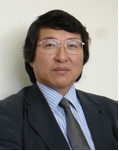
[Speaker]: Prof. Masaki Nakagawa (Tokyo University of Agriculture and Technology, Japan)
[Homepage]: http://web.tuat.ac.jp/~nakagawa/en/nakagawa.shtml
[Abstract]: It is about 50 years since RAND tablet was invented. Methods to recognize online handwriting started from heuristic methods, then proceeded to DP-matching, Time-delayed NN, HMM, MRF, etc. and then moving to Deep NN. The combination with offline recognition and linguistic and geometric contexts has made the recognition more robust. We experienced two small peaks of online recognition in the 80s and the 90s but did not expand to a larger success. Due to a steady progress in handwriting recognition and the success of touch-sensitive smart phones/tablets, however, online recognition has now established platforms for direct pointing and direct manipulation. In this talk, I will first summarize the history of online handwriting recognition, the merits of handwriting input, and the requirements for recognition and user interfaces. Then, I will present the common architecture of recent online handwriting recognition systems on smart phones/tablets. Finally, I will present the future applications of computer-assisted and automated marking of handwritten answers, which is challenging for pattern recognition, human interface and artificial intelligence.
[Biography]: Masaki Nakagawa is a professor with the Department of Computer and Information Sciences, Tokyo University of Agriculture and Technology. He has been working on handwriting recognition, pen-based user interfaces and applications — especially educational applications. Since 1980s, he has been collaborating with many companies and has contributed to develop handwriting recognizers for real commercial use. In 2011, he founded a start-up iLabo, which now sells the best handwriting recognizers for touch-based smart phones, tablets and so on in Japan. In 2012, iLabo was selected as one of the 100 most promising ventures in Japan by Nikkei Business. In 1990, he also introduced User Interfaces for tablet devices and developed several educational applications using various sizes of tablets. His U.S. patents to scroll the window in proportion to the pen speed, called “touch scroll”, were sold from his university to a company for the highest amount among all the Japanese universities in the fiscal year 2010. He is also working on historical document processing to read excavated documents from the Heijo palace (the capital in the 7th century) in Nara, Japan, and to read Chu Nom documents in Vietnam. He received the Minister of Education and Science award of Japan this year. He is a fellow of IAPR (International Association of Pattern Recognition), IEICE (Institute of Electronics, Information and Communication Engineers, Japan) and IPSJ (Information Processing Society of Japan).
Invited Talk
Personal Digital Bodyguards for e-Security, e-Health and e-Learning: An International Journey (download slides)
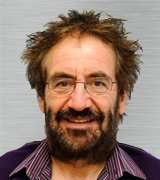
[Speaker]: Prof. Réjean Plamondon (École Polytechnique de Montréal, Canada)
[Homepage]: http://www.polymtl.ca/recherche/rc/en/professeurs/details.php?NoProf=103
[Abstract]: In the forthcoming years, the ubiquity of hand-held tablets and cell phones, along with their increased computing power and ergonomic data capture performances, will make it possible to convert these devices into Personal Digital Bodyguards (PDBs). PDBs will protect people’s sensitive data with signature verification, provide equipment use security with writer authentication, handwritten CAPTCHAs (e-security) and perform words spotting and recognition to monitor user fine motor control, which can detect stress, aging and health problems (e-health). In the hands of children, these tools will turn into toys helping them to learn and master their fine motricity and become better writers and students (e-learning).
At Scribens laboratory, we have been working on some of these potential applications for many years, directly or indirectly guided by the Lognormality Principle. In its simplest form, this fundamental premise states that the lognormality of the neuromuscular impulse responses is a basic global feature reflecting the behaviour of individuals who are in perfect control of their movements. As a corollary, if we specifically focus on the basic mathematical convergence toward lognormality, motor control learning in young children can be interpreted as a migration toward lognormality. Then, for the greater part of their lives, human adults take advantage of lognormality to control their movements. Finally, as aging and health issues increase, a progressive departure from lognormality is anticipated.
From a practical point of view, the concept of lognormality provides a common thread, an integrative standpoint to track the problems of signature verification, writer identification, handwriting generation, recognition and learning. This keynote presentation points out how the resulting methodologies could be of great help to meet the PDB challenge. It highlights which pathways we have decided to follow to reach this goal, where we stand now and what should be our next moves.
Throughout the talk, we call attention to the worldwide collective efforts that we have initiated over the years to track some specific problems, emphasizing the specific expertise of our national and international partners and putting these accomplishments in the context of the current state of the art. Actually, more than twenty (20) research teams from eight (8) different countries are working on various aspects of the PDB challenge. In e-Security, six (6) studies are going on signature verification (aging effects, stability analysis, system evaluation, performance enhancement through synthetic generation and reference minimization) and one (1) group works on handwritten CAPTCHA generation. In e-Health, six (6) studies deal with Parkinson disease, Alzheimer disease, cerebrovascular accident, under various experimental conditions. In e-Learning, regarding gesture analysis and handwriting recognition, three (3) investigations on gesture command generation are going on to improve human computer interfaces and two (2) teams use word synthesis to improve the recognition performances of their algorithms. Finally, three (3) groups are dealing with the kinematic analysis of graphomotor abilities in normal children, those with ADHD (Attention Deficit/Hyperactivity Disorder) and also those with mild traumatic brain injuries to improve the assessment of children with concussion.
The talk concludes by suggesting that this research program is the tip of an iceberg and disclosing potential extension to robotics, speech and arts through newly starting projects.
[Biography]: Réjean Plamondon is Professor at École Polytechnique, Université de Montréal, P.Q., Canada. Over the years, he has been involved in many pattern recognition projects, particularly in the field of on-line and off-line handwriting analysis and processing. His main contribution has been the development of a kinematic theory of rapid human movements which can take into account the major psychophysical phenomena reported in studies dealing with rapid movements. The theory has been found successful in describing the basic kinematic properties of velocity profiles as observed in finger, hand, arm, head and eye movements. Professor Plamondon has studied and analyzed these biosignals extensively in order to develop creative and powerful methods and systems in various domains of engineering.
Fellow of NIAS (1989), of IAPR (1994) and of IEEE
(2000), Professor Plamondon has been involved in the planning and
organization of numerous international conferences and workshops and has
worked with scientists from many countries. He is the author or co-author of
more than 300 publications and owner of four patents. He recently received
the IAPR/ICDAR 2013 outstanding achievement award for “theoretical
contributions to the understanding of human movement and its applications to
signature verification, handwriting recognition, instruction, and health
assessment, and for promoting on-line document processing in numerous
multidisciplinary fields”.
